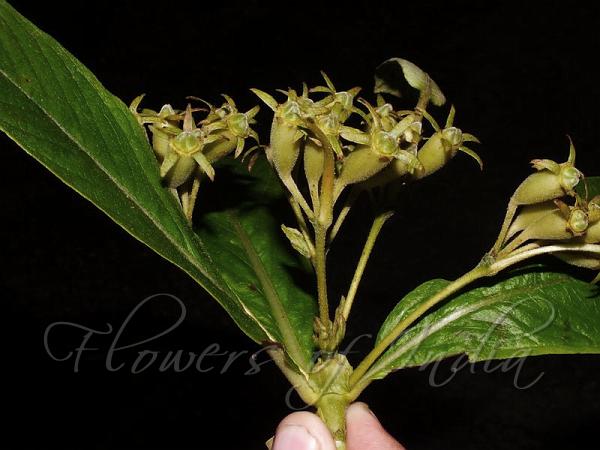|
| Parasitic Mussaenda |
|

|

| File size | 94965 |
| Original date | 8/10/13 4:33 PM |
| Resolution | 800 x 600 |
| Flash | Flash fired |
| Focal length | 13.3mm |
| Exposure time | 1/2000s |
| Aperture | 11.0 |
| Focus Distance | 0.0m |
| Metering Mode | Spot |
| Camera make | FUJIFILM |
| Camera model | FinePix HS35EXR |
| Sensor type | OneChipColorArea |
|
|
|
|
Photo: |
Botanical name: Neohymenopogon parasiticus Family: Rubiaceae (Coffee family)
Synonyms: Mussaenda cuneifolia, Hymenopogon parasiticus
Synonyms: Mussaenda cuneifolia, Hymenopogon parasiticus
Parasitic Mussaenda is a small shrub found growing on
other trees, with inverted-lanceshaped leaves crowded at the ends of
the branches, and with creamy-white tubular flowers in branched
flat-topped clusters, at branch-ends, with longer narrow often white
bracts. Flower-tube is very slender 3-4 cm, with 5 hairy spreading
lobes. Sepals are linear, about 1 cm, bracts narrow-lanceshaped,
stalked. Leaves are entire, 8-30 cm, hairy on the veins beneath; stems
up to 1 m. Capsule are cylindrical 1-1.5 cm, with persistent calyx,
splitting into 4 valves at tip, 2-celled, many-seeded. Parasitic
Mussaenda is found in the Himalayas, from Uttarakhand to, Nepal, SW
China and SE Asia, at altitudes of 1600-2800 m. Flowering: June-July.
| Identification credit: Saroj Kasaju, D.S. Rawat | Photographed in Chakrata, Uttarakhand & Lepchaghat, Darjeeling. |
• Is this flower misidentified? If yes,